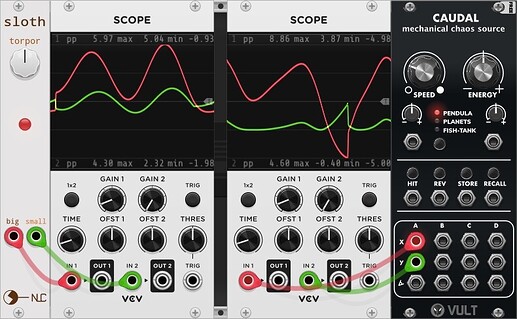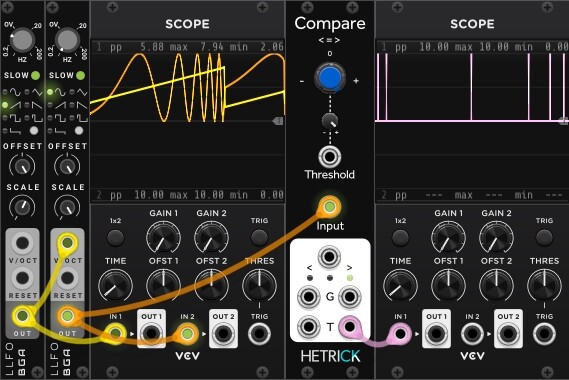Some random tools and tips for use in Generative Patches…
Sample & Hold is very common and uselfull in Generative Patches to, well…sample and hold…voltages when triggered. Voltages (CV) could represent anything in modular. E.g. clock/tempo, pitch, amplitude etc.
If more gradual transitions between values are needed, there’s the Slew limiter. Can also transform (sharply edged) gates or triggers to more gradual envelopes. This averageing/dampening effect is not allowing fast/large transitions between sample values. So, effectively not allowing higher frequencies, so effectively a crude low pass filter (yes, also for audiorate input).
The Bernoulli gate adds probability to gating/triggering.
A Flip/Flop can be usefull to gate stuff (e.g. switch stuff on of off) until the next gate/trigger. Effectively a Filp/Flop is also a Clock Divider (/2).
An Edge Detector can gate stuff depending on the current slope of a signal at the input (rising/falling).
Underrated: the fixed Voltage and Offset. Also very usefull in Logic.
A Comparator compares Voltages and generates Gates (or Triggers) to do stuff as soon as some relative condition is met. A Comparator generally takes 2 inputs and applies logic. E.g >, >=, =, <=, <. The binary output can be used as a Gate. Such a gate holds as long as the logic is true. Some can also output a Trigger (which will not hold).
Less common is the Accumulator. You can use an Accumulator to manage voltages over time. Basically, if an Accumulator receives a Trigger/Gate, then it adds a voltage to the voltage it holds at that point in time (drops in a bucket). Either a set/fixed voltage or whatever value it reads from an input. Negative voltages will subtract. The Reset can be used to revert back to 0V (empty the bucket).
You can combine Accumulator with a Comparator to open a Gate as soon is some relative condition is met. Or use a Comparator to trigger an Accumulator as soon as some relative condition is met. Combining with Accumulator Reset can create a cycling level/counter where the Comparator resets the Accumulator as soon as some level is reached.
The DocB ACC Accumulator is pretty versatile.
![]() .
.




